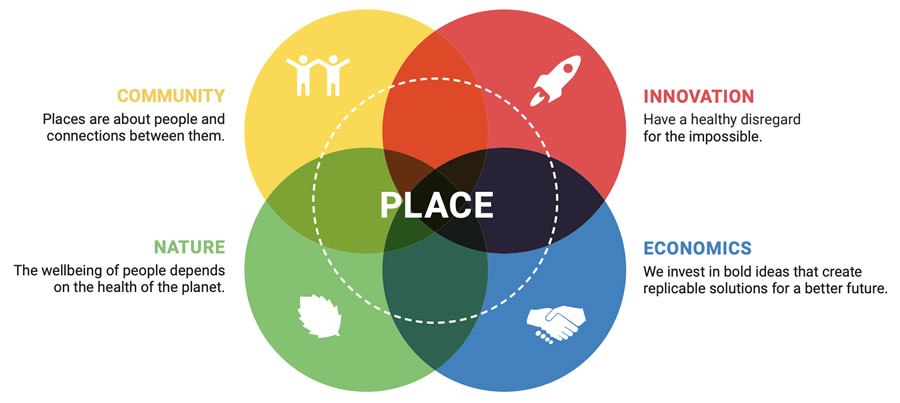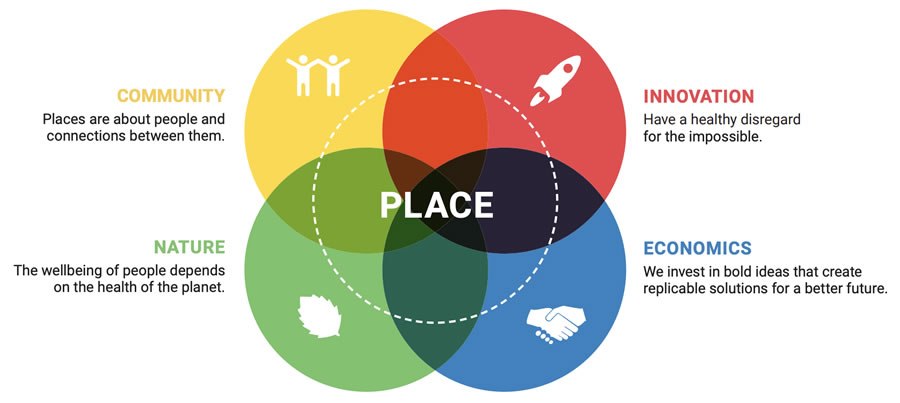Google’s co-founder Larry Page used to have a reoccurring debate with the late Apple founder Steve Jobs. Jobs would argue that Google was losing focus and taking on too many projects rather than doing a few things really well. Page’s response: “We’d like to have a bigger impact on the world by doing more things.”
This gives a good simplification of what makes Google tick. They are always looking for new ways to innovate regardless of the product. They even created a “moonshot laboratory” in 2010 called simply X. In 2015 they announced their desire to use their technological talent to rethink the way cities are built with an urban innovation side project called Sidewalk Labs. Since then they have been designing a remarkable project in Toronto called Quayside that features futurist infrastructure like modular pavement and retractable clear awnings.
Recently Google made a significant purchase of $1 billion worth of land next to their Mountain View headquarters. Now they have released their plans for the area to the city of Mountain View that show that they don’t want to just add office space to their headquarters, they want to develop a neighborhood.
“From a place for cars to a place for people.” That is one of the first pitches the Google makes in the document, showing the transformation of a parking lot into a bustling downtown.
They lay out their “principles of place” that they say guided their decision making process: “Place isn’t just about buildings or the spaces between them. Place is about the experiences people crave and the connections people make to create the community.” They also display their four main principles in a rather succinct Venn diagram.

One of the main components of the plan is a commitment to developing four square feet of residential space for every one of office. This would result in between 6,000 and 6,600 new homes, twenty-percent of which will be “affordable to low-, moderate-, and middle-income individuals including service workers, emergency responders, teachers, and nurses.” They also plan on making improvements in mobility infrastructure like 7.5 miles of bike and pedestrian paths and a community shuttle and have over 35 acres of publicly accessible open space.
Google’s neighborhood, just like every other municipality, also comes with economic development plans. They plan on “Activating the streets, parks and ground floors of new residential and office buildings with 200,000 to 250,000 square feet of retail, community services and local businesses including a grocery store, doctors’ offices and a farmers’ market.” Funding will also be available for subsidies to support small businesses and nonprofits and for an art installation that features local artist. A 3.5 acre site will also be donated to build a new elementary school and that comes with money to support the middle and high schools in the district as well.
Google has highlighted their commitment to sustainability by promising that all energy used by the company in the area will come from renewable sources and that all buildings will be LEED platinum certified and GreenPoint rated.
The natural area around the site will also be an important stakeholder in the process. They plan on not only having a significant amount of open space easily accessible from the area but to connect it all together with a “Green Loop” that is meant to “affirm North Bayshore’s native ecological identity, create great experiences, and provide exponential habitat value” as well as “create a safe and compelling districtwide alternative to cars.”
The plan, in true Google style, is both inspiring and practical. In some ways it seems to be a more inclusive (dare I say open source?) alternative to Apple’s much-maligned headquarters that was completed down the road. Since innovative landscape architecture and placemaking needs ideas from a huge variety of disciplines it makes sense that Google, the company that intentionally does “too many things,” would be a better candidate to challenge the status quo. If they are able to prove that this type progressive master plan can be a success we might start seeing a lot more following in their footsteps or perhaps just outsourcing the job to the internet giant.
Larry Page is also famous for saying that “We want to build technology that everybody loves using, and that affects everyone. We want to create beautiful, intuitive services and technologies that are so incredibly useful that people use them twice a day. Like they use a toothbrush. There aren’t that many things people use twice a day.” While Google products are already a regular (I would say more that two times per day) part of many of our lives, there are few products that we use more regularly than the neighborhoods we occupy.


 Franco Faraudo has an MBA in entrepreneurship and has worked with companies on their branding and content strategy. He has worked in real estate as an agent, manager, and investor. He writes about the intersection between the physical and digital world and is a co-founder of Propmodo.
Franco Faraudo has an MBA in entrepreneurship and has worked with companies on their branding and content strategy. He has worked in real estate as an agent, manager, and investor. He writes about the intersection between the physical and digital world and is a co-founder of Propmodo.